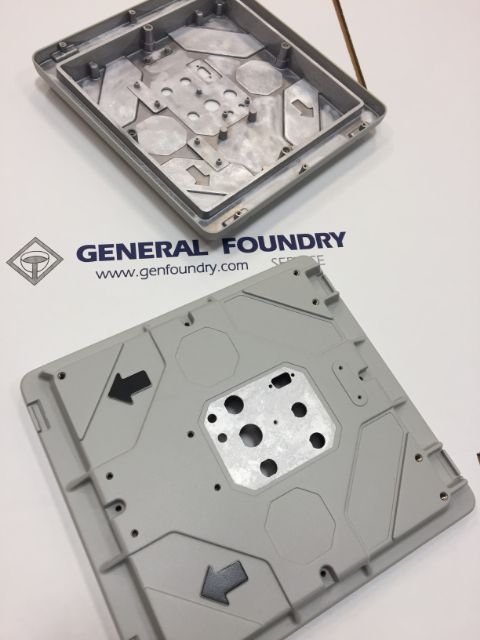Low Volume or Prototype Production with Rubber Plaster Molding
Rubber plaster mold casting is a specialized prototype and low volume production process that provides a complementary alternative to investment casting, sand casting & die casting. Plaster parts are often used to prototype die casting, as plaster will give you similar characteristics (smooth surface finish, thin walls, and complex geometries) as the die.
Contact us for more information regarding our rubber plaster mold casting processes and prototyping casting options. You can also call us at 510-297-5040 and we will be happy to assist you with your questions. General Foundry provides true one stop shopping.
The Rubber Plaster Mold Casting Process
When compared to other casting processes, rubber plaster mold castings provide thin walls, finer surface finish and crisper features. The steps for the plaster process include:
- Create master negatives
- Pour rubber against master negatives & coreboxes, creating rubber positives
- Pour plaster slurry against rubber positives & coreboxes
- Plaster solidifies, creating plaster mold halves & cores
- Bake molds & cores overnight
- Pin molds together & pour metal
- Shake out part from plaster molds
Castings from the rubber plaster mold process will give you very similar characteristics to die castings: 63 RMS surface finish, thin (down to .080”), and complex/deep draw geometries. Additionally, plaster parts accommodate among the highest design freedom (breaking many of the die rules). Any hollow features or undercuts are made with plaster cores (instead of sand). Rubber plaster mold yields noticeably crisper features than sand.
Advantages of Rubber Plaster Mold Casting
The rubber plaster mold process is particularly suitable for castings with extremely thin sections. This process is suitable for both prototype and low volume production quantities of aluminum and zinc-aluminum parts. Some of the added benefits of utilizing rubber plaster mold castings include:
- Tighter ‘as cast’ tolerances compared to the sand process
- Minimal machining and other finishing operations required
- Smoother surface and crisper feature definitions
- More design freedom, less draft required
Rubber Plaster Mold Casting Applications
Compared to die casting, the rubber plaster mold process produces castings with lower tooling costs and faster lead times. The production process is efficient for low volumes and can provide a reliable production outlet for numerous industrial applications, including:
- Medical equipment
- Bio-Tech/Life Science
- Aerospace (non-structural)
- Robotics
- Electronics
- Semi-Conductor





